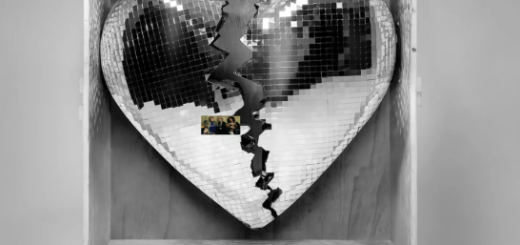Dance, Dance, Dance by Lykke Li Lyrics Meaning – Unraveling the Silent Symphony of Movement
Lyrics
But I can dance, dance, dance
Couldn’t possibly tell you how I mean
But I can dance, dance, dance
So when I trip on my feet
Look at the beat
The words are, written in the sand
When I’m shaking my hips
Look for the swing
The words are, written in the air
Dance,
I was a dancer all along
Dance, dance, dance
Words can never make up for what you do
Easy conversations, there’s no such thing
No I’m shy, shy, shy
My hips, they lie ’cause in reality I’m shy, shy, shy
But when I trip on my feet
Look at the ground
The words are written in the dust
When I’m shaking my hips
Look for the swing
The words are written in the air
Dance,
I was a dancer all along
Dance, dance, dance
Words can never make up for what you do
Dance, dance, dance
Subtlety and innuendo suffuse the beats of Lykke Li’s ethereal track ‘Dance, Dance, Dance.’ With its haunting blend of airy vocals and understated instrumentation, Lykke Li transforms the act of dancing into a powerful conduit for emotional expression. The song whispers truths about the limitations of language and the profound eloquence of body movement.
Channeling a lyrical yet raw energy, ‘Dance, Dance, Dance’ waltzes into the listener’s soul, carefully sidestepping the spoken word and opting instead for a ballet of beats and rhythms. Li’s serene introspection and her mesmerizing acoustic backdrop create a space where words are secondary to the story told through the sway of the hips and the rhythm of the feet.
The Silent Art of Spoken Sand and Air
Far below the obvious layer of velvety vocals and the soft strumming of guitars lies a much deeper narrative. ‘Dance, Dance, Dance’ speaks, without truly speaking, about the complexity of communication. Highlighting the struggle many face when words fall short, Li masterfully shows us that our bodies have their own vocabulary.
And as she trips and shakes, drawing attention to the ground and the air, listeners are reminded of the ephemeral nature of spoken words—they’re transient like writing in sand or dust, easily erased and forgotten. In contrast, dance endures, transcending the temporary for a more permanent imprint on our emotional canvas.
Hips Don’t Lie: The Shyness Paradox
The juxtaposition of the protagonist’s self-proclaimed shyness with the expressive nature of their hips forges a striking paradox. It’s an ode to the internal struggle of introverts—the silent scream for participation in a world that often misunderstands their silence. Through the character’s movements, Li argues that what we say is not always who we are.
Moreover, by admitting ‘My hips, they lie,’ Li paints a picture of dance as both a revelation and a concealment of the self. It’s a layered confession of an identity masked by rhythm, speaking as boldly as a true extrovert while hiding a whispering, quieter soul within.
A Dance Floor Epiphany: Discovering One’s True Self
The haunting refrain ‘I was a dancer all along’ serves as much as a self-realization as a declaration to the world. It’s the story of discovering one’s essence in the midst of the mundane, a realization that perhaps our most sincere form of expression is not through the words we laboriously craft, but in the art our bodies create.
In unearthing this dancers’ manifesto, Li encourages the listener to contemplate where their genuine self lies. Is it nestled in the carefully chosen phrases we present to the world, or is it waiting to be set free, one dance step at a time?
The Vibrato of the Soul’s String: Parsing the Hidden Meaning
To delve into the ‘hidden meaning’ behind ‘Dance, Dance, Dance’ is to accept the invitation to look beyond the overt simplicity of its chorus. It is to interpret the quiet confidence beneath the loop of ‘dance’ as a call to action—a beckoning to embrace the nonverbal dialogues we’re all capable of leading.
Lykke Li’s song becomes a poetic manifesto about the liberation found in movement, the relief of letting our bodies do the talking when words are inadequate or too daunting. Dance is not just a series of motions; it is an unspoken confession, a silent story being told.
Echoes in Motion: The Song’s Most Memorable Lines
‘Words can never make up for what you do,’ echoes as a powerful refrain throughout the song, distinguishing itself as a poignant reminder of the gap between action and articulation. It’s an acknowledgment of the depth and truth found in even the simplest of gestures over the most elaborate of speeches.
This line asserts the inherent power of doing over saying, of feeling over telling. It crystallizes the song’s core message—that movement can express a multitude of emotions, intentions, and meanings far more efficiently than the clumsy dance of the tongue tied with words.








